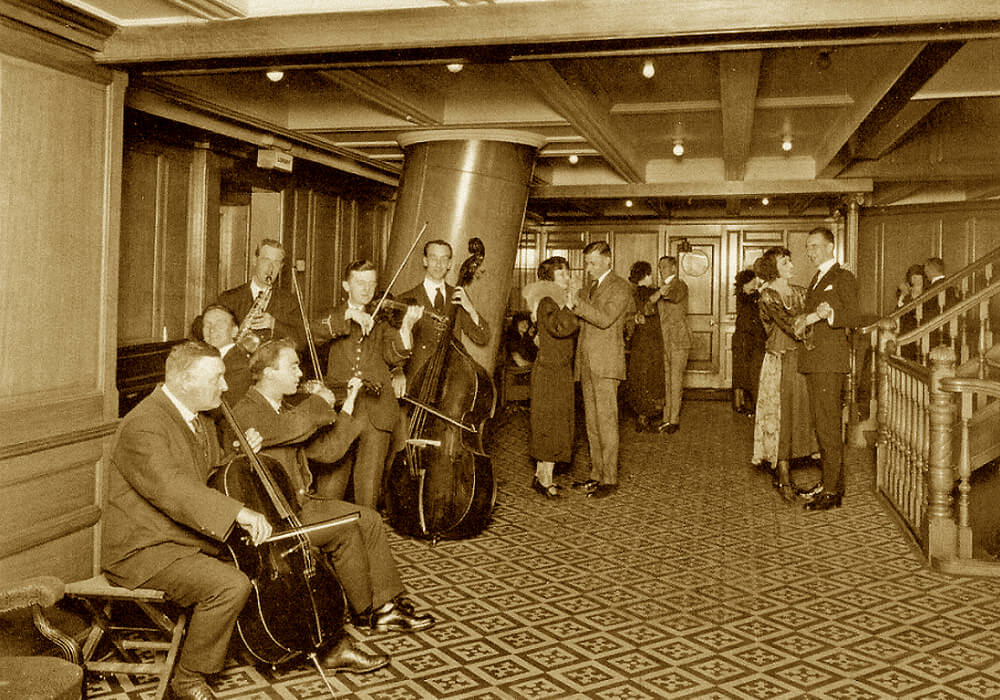MARIANI’S
Virtual Gourmet
February
7, 2021
NEWSLETTER
IN THIS ISSUE
CAJUN VS CREOLE
By John Mariani
NEW YORK CORNER
LOVE AND PIZZA
CHAPTER FORTY-SIX
By John Mariani
NOTES FROM THE WINE CELLAR
ICE WINE FOR FROZEN WINTER
By John Mariani
❖❖❖
On the next video episode of Celebrating Act 2 on February 8, I will be speaking with hosts John Coleman and Art Kirsch about How to Save $$$ On Vacation: Click.
❖❖❖
CAJUN VS CREOLE:
A Tale of Two Gumbos
By John Mariani
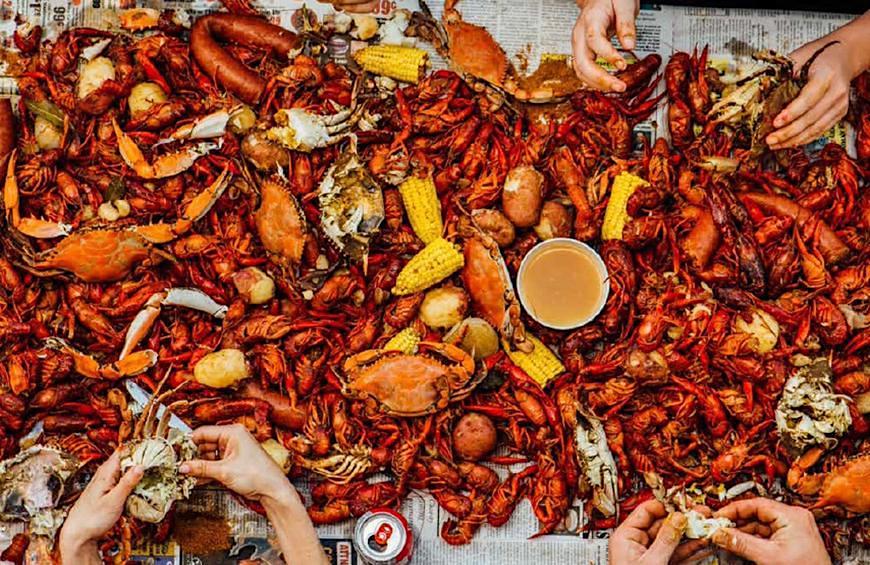
Crawfish Boil at Toup's Eatery
Cajun-born New Orleans food authority Tom Fitzmorris contends, “Creole food is genteel city food, and Cajun food is rustic country food. But both have French dish names and similar ingredients.” But then he says, “There is no real difference anymore. The two cuisines have cross-pollinated each other so thoroughly that the question is academic."
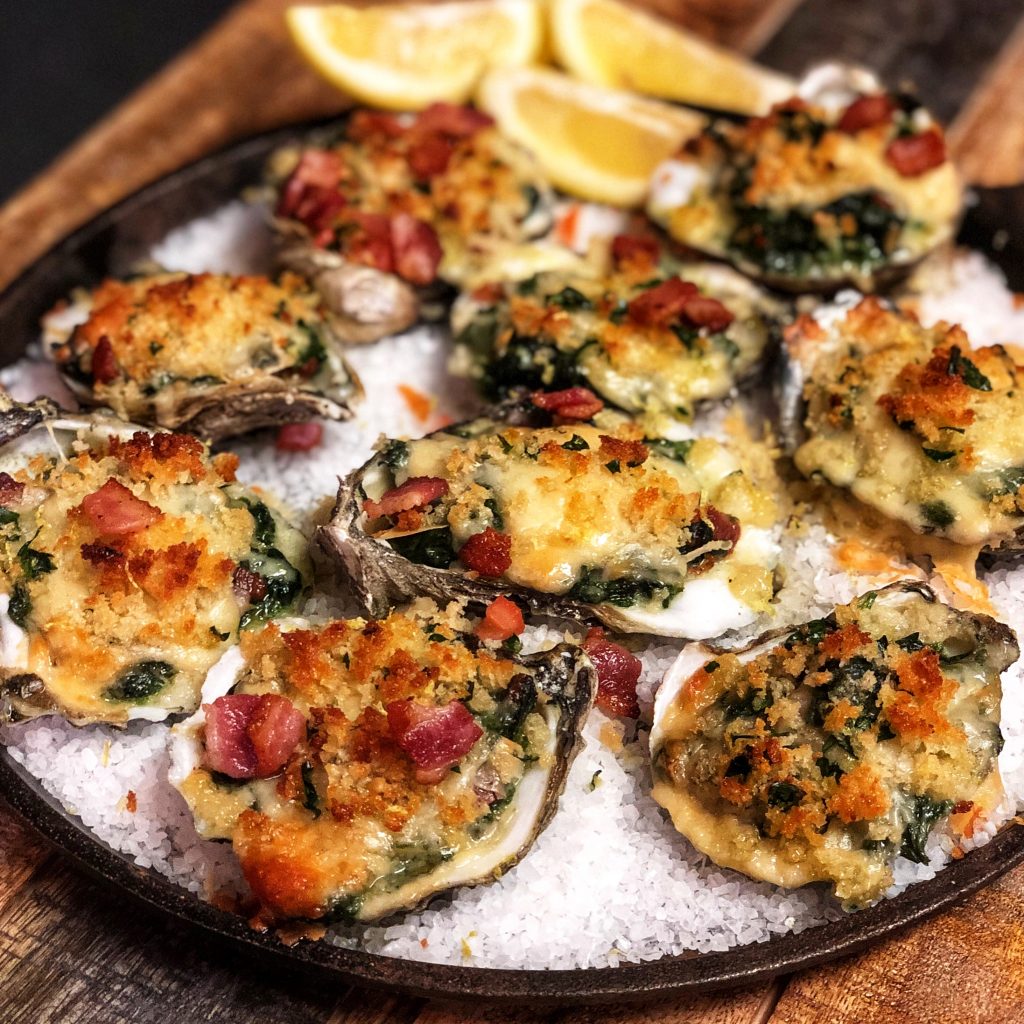 Maybe
so, at least in New Orleans, whose restaurants were
once dyed-in-the-wool Creole but have now accepted
Cajun influences. But there are still distinctions,
and the farther west you go into the bayou country,
the more the food will be much more downhome and a
lot spicier than the Creole food in the east, where
the dominant influence has always been French haute
cuisine.
Maybe
so, at least in New Orleans, whose restaurants were
once dyed-in-the-wool Creole but have now accepted
Cajun influences. But there are still distinctions,
and the farther west you go into the bayou country,
the more the food will be much more downhome and a
lot spicier than the Creole food in the east, where
the dominant influence has always been French haute
cuisine. Classic Creole dishes rarely seen in Cajun eateries would include oysters Rockefeller (left), chicken Clemençeau, crawfish Sardou, frogs’ legs Provençal, and pommmes soufflé, all still served at Antoine’s (below), opened in New Orleans in 1840, and where, until recently, the menu was still all in French. Indeed, if you want to get a true sense of the refined flavors and style of Creole cooking, a table at
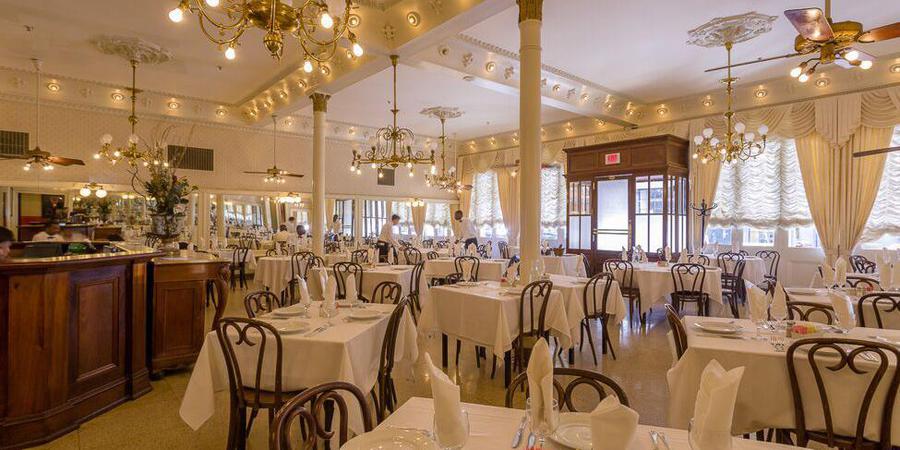 Antoine’s
would be a good start.
Antoine’s
would be a good start.
So, too, all the classic Creole dishes are on the menu at the revered restaurant Galatoire’s (below, left), opened in 1905 on Bourbon Street—crabmeat ravigote, shrimp Marguery, chicken bonne-femme, and sweet potato cheesecake—served by long-term waiters in tuxedos who will tell you what fish just swam into the kitchen that morning.
The lighter style known as “New Creole” was pioneered by the late Ella and Dick Brennan at Commander’s Palace in the 1970s, with dishes like crawfish mousse, shrimp and fettuccine, trout with roasted pecans, and bread pudding soufflé. It was from Commander’s Palace that a young chef named Emeril Lagasse graduated to open his own namesake restaurant, where he brought in
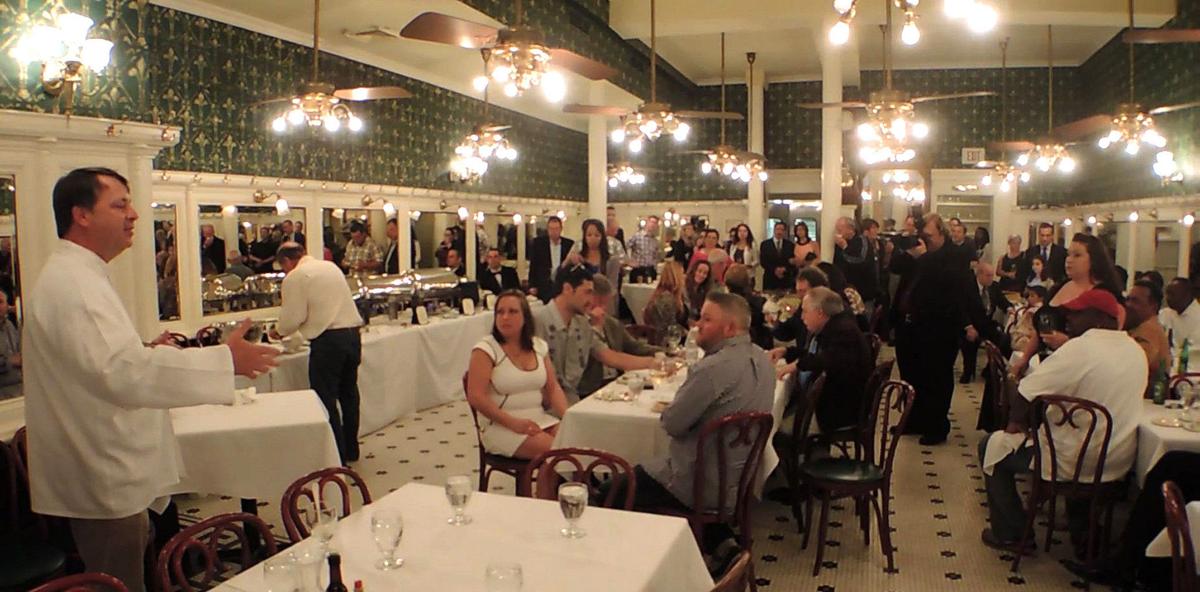 global influences to Creole
traditions with dishes like sticky buffalo duck
wings; jerk Mississippi quail with chorizo sausage
and Jamaican salsa; and grilled pork chop with
caramelized sweet potatoes, tamarind glaze and green
chile mole, along with his own versions of barbecued
shrimp and gumbo.
global influences to Creole
traditions with dishes like sticky buffalo duck
wings; jerk Mississippi quail with chorizo sausage
and Jamaican salsa; and grilled pork chop with
caramelized sweet potatoes, tamarind glaze and green
chile mole, along with his own versions of barbecued
shrimp and gumbo.
In fact, gumbo, along with jambalaya, crawfish etouffée, and shrimp remoulade, is a crossover dish found in both Creole and Cajun kitchens. Today even restaurants in the French Quarter have added Cajun versions to their menus, like Mr. B’s Bistro, whose gumbo is a rich broth of Gulf shrimp, crabmeat, and okra, while the latter, on the same menu, is gumbo ya-ya, made with chicken and andouille sausage flecked with hot pepper.
Aficionados will tell you it’s all about the “roux”—a mix of fat and flour that is browned in a saucepan and used to thicken a dish’s base or sauce. In Creole cookery, the roux is lighter in color and thinner, in Cajun it’s darker and thicker, differences that affect the color and taste of the gumbos.
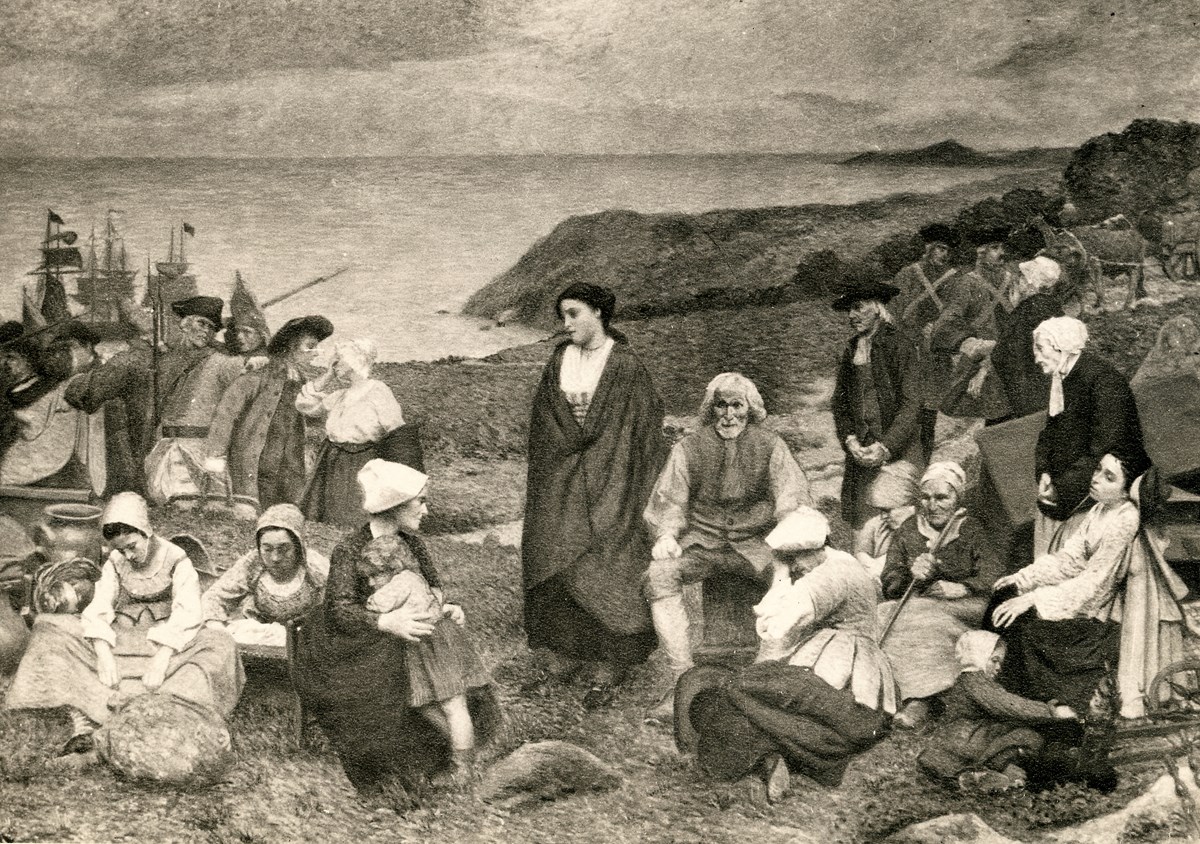
I should mention about now that the word “Creole” is applied to the descendants of the first French settlers in Louisiana as well as to the mixed bloods—European, Spanish, Native American, African-American—who inhabited the same territory and spoke a French dialect. “Cajuns” are descendants of French Acadians displaced from Nova Scotia by the British and sent to backwoods western Louisiana (right).
So, when the redoubtable Cajun chef Paul Prudhomme, who also had worked at Commander’s Palace, opened a no-frills communal seating eatery called K-Paul’s Louisiana Kitchen in the French Quarter (now closed), his intensely rich, blisteringly spicy country-style Cajun food was greeted with far more praise from visiting food writers than many locals, who thought the food was way out of whack with their beloved Creole culinary traditions.
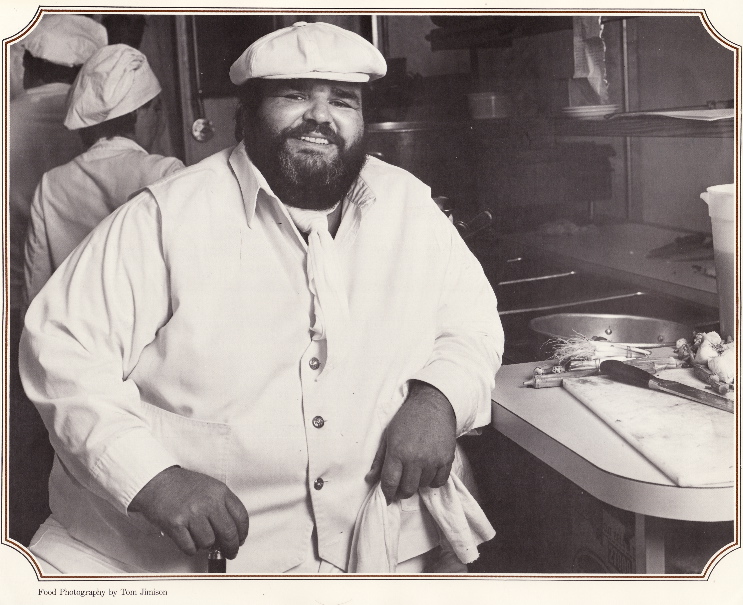 Prudhomme
(left) eventually won them over with
signature dishes like blackened redfish, eggplant
bayou Teche shaped like a Cajun canoe called a
pirogue, crawfish pie (like the one Hank Williams
sang about in “Jambalaya”) and chicken
Tchoupitoulas.
Prudhomme
(left) eventually won them over with
signature dishes like blackened redfish, eggplant
bayou Teche shaped like a Cajun canoe called a
pirogue, crawfish pie (like the one Hank Williams
sang about in “Jambalaya”) and chicken
Tchoupitoulas. Bayou-born-and-raised Donald Link has straddled both culinary worlds. When he opened a New Orleans restaurant named Herbsaint, he served eclectic items like curried shrimp with chili couscous, and gnocchi with pancetta and Parmesan; but his next restaurant, Cochon (“pig”), was truer to his roots. In his cookbook Real Cajun, Link called his food “Rustic Home Cooking,” offering dishes like Aunt Sally’s black-eyed peas, fried pig’s ears with barbecue sauce, smoked pork chops with watermelon pickle and fried alligator with a chili garlic mayonnaise.
Link also brought to New Orleans the Cajun boucherie (“butcher”), making his own boudin and andouille sausages and bacon. And the farther away from New Orleans you go, the food will more resemble Cochon’s than anything at Herbsaint.
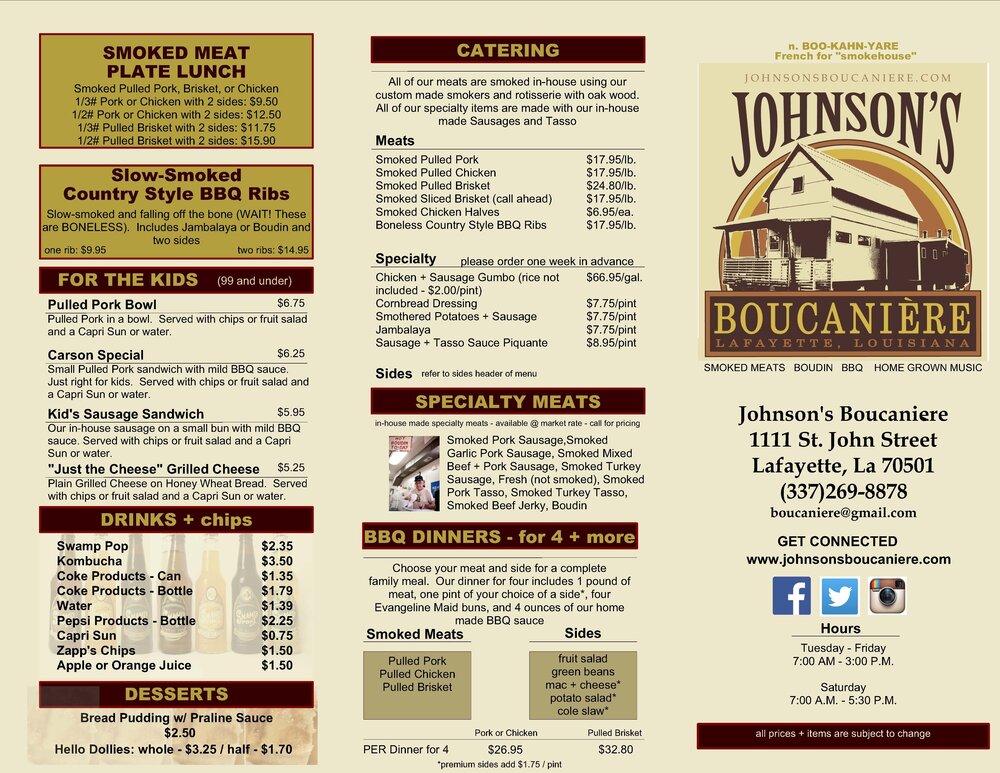 The town of LaPlace even
declares itself—to nearby townspeople’s
consternation—the Andouille Capital of the World and
holds a festival each October to celebrate it.
The town of LaPlace even
declares itself—to nearby townspeople’s
consternation—the Andouille Capital of the World and
holds a festival each October to celebrate it.To taste Cajun boudin and barbecue in its authentic setting, head to Lafayette, on the Vermilion River in southwestern Louisiana, where, since 1937, John’s Boucanière has been turning out hearty smoked meats, boudin sausages and beef briskets.The store has a little walk-in area for ordering and paying, and in the back, three enormous smoking ovens filled with hanging
 sausage,
trays of beef and pork on a rotisserie, cooking in
their own juices. Don’t
miss the Zydeco Special—a sandwich of slow-smoked
mixed beef and pork sausage loaded up with
mayonnaise, mustard, lettuce and tomatoes. Also
terrific are the pulled pork po’ boy sandwich,
crispy-skinned brisket of beef, and smoky boudin
grilled on a hot griddle and served with hot sauce.
sausage,
trays of beef and pork on a rotisserie, cooking in
their own juices. Don’t
miss the Zydeco Special—a sandwich of slow-smoked
mixed beef and pork sausage loaded up with
mayonnaise, mustard, lettuce and tomatoes. Also
terrific are the pulled pork po’ boy sandwich,
crispy-skinned brisket of beef, and smoky boudin
grilled on a hot griddle and served with hot sauce.That is what Cajun tastes like in its purest form. And it sure doesn’t taste like chicken Clemençeau or pommes soufflé.
❖❖❖
By John Mariani
Since, for the time being, I am unable to write about or review New York City restaurants, I have decided instead to print a serialized version of my (unpublished) novel Love and Pizza, which takes place in New York and Italy and involves a young, beautiful Bronx woman named Nicola Santini from an Italian family impassioned about food. As the story goes on, Nicola, who is a student at Columbia University, struggles to maintain her roots while seeing a future that could lead her far from them—a future that involves a career and a love affair that would change her life forever. So, while New York’s restaurants remain closed, I will run a chapter of the Love and Pizza each week until the crisis is over. Afterwards I shall be offering the entire book digitally. I hope you like the idea and even more that you will love Nicola, her family and her friends. I’d love to know what you think. Contact me at loveandpizza123@gmail.com
—John Mariani
To read previous chapters go to archive (beginning with March 29, 2020, issue).
LOVE AND PIZZA
Cover Art By Galina Dargery

CHAPTER FORTY-SIX

CHAPTER
FORTY-SIX
Finally,
after much back and forth, a date was
decided upon—a Sunday family dinner at the
restaurant, with all Neapolitan dishes.
Marco wanted to get there very early, so
Tony had to open the place at 7 a.m, when
the meal’s preparation began in earnest,
with Marco pleading that he work alone.
“You don’t need any help from my crew?”
asked Tony.
“No, they have enough to do cooking for
your customers.”
“Not even Nicola?”
Marco thought the better of his demand
and said, “Ah, of course, I’d love to have
Nicola with me in the kitchen.”
But
Nicola had gotten back from her latest trip
very late the night before and needed to sleep
in, only arriving at the restaurant around
eleven. Apologizing, she said, “So you need me
to help with anything, Marco?”
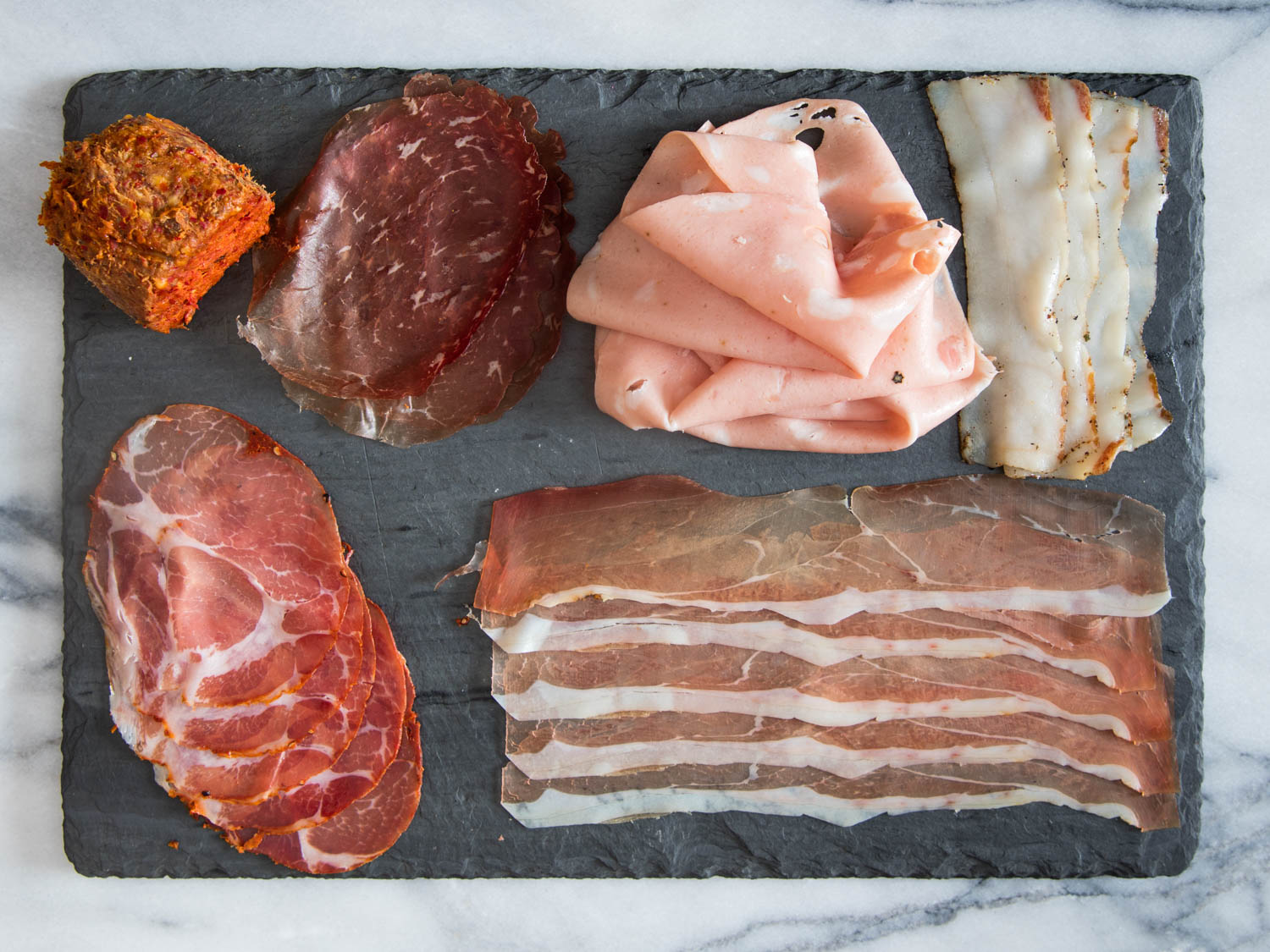 Marco didn't look up from
his cutting board. “Not now,” he snapped. “Everything’s
done.” Nicola
winced and pretended to sneak out of the
kitchen.
Marco didn't look up from
his cutting board. “Not now,” he snapped. “Everything’s
done.” Nicola
winced and pretended to sneak out of the
kitchen.
Her family arrived at one o’clock,
after Mass at Mount Carmel, everyone still
dressed up, a tradition that had fallen away
elsewhere in many Catholic communities but was
still maintained in Belmont.
Nicola went back into the kitchen and
stood there, waiting for Marco to say
something. Then, “Okay, Nicola, I need some
help bringing out the food. I
will take some of the dishes and I want to
explain what they’re eating, okay?”
Nicola saluted
and said, “Si,
Maestro,” which made Marco cave and say,
“Nicolina,
c’e perfetto!” Then
he hugged and kissed her. “I missed you this
week.”
“I missed you, too. Okay,
what do I bring out?”
The array of dishes—not too many and
not in large portions—began exiting the
kitchen, and with each one Marco explained the
name of the dish, where it came from, why it
is made a certain way, and the provenance of
the ingredients.
The antipasti were cold: fresh
mozzarella, which Marco had bought next door
from the Greco family; stuffed eggplant and
pepper rolls; and some fine Italian salumi. For
the pasta he served rounds of semolina gnocchi
baked with  melted fontina cheese;
then came sartù di
riso, a baked rice dish containing
sausage, chicken giblets, peas and mushrooms
bound by mozzarella.
melted fontina cheese;
then came sartù di
riso, a baked rice dish containing
sausage, chicken giblets, peas and mushrooms
bound by mozzarella.
There was a fish course—baccalà,
the salted, very stiff dried cod that needs to
be soaked and rinsed for many hours in running
water to become edible. Marco
cooked
it slowly with sweet peppers. (He had decided
on baccalà
because he couldn’t find the quality of fresh
fish he wanted on a Sunday.)
As in Capri, the main course was quite
simple: that wonderful New York strip steak
Nicola had so enjoyed, seared and cooked rare,
sliced into thick slabs and laid on
garlic-rich sautéed spinach, all glossed with
a few drops of olive oil.
Since Marco did not think of himself as
much of a dessert maker, he ended the meal
with a granita,
which was like shaved ice richly flavored with
very dark, very sweet espresso and topped with
a little whipped cream.
The bravos were long and
loud at the Santini table, and Nicola was
extremely proud of what Marco had done,
seemingly with little effort. For,
although the Santinis had pretty much tasted
variations of everything Marco had prepared,
all of them agreed they had never tasted any
like it.
Anthony Santini quieted down his family
and raised his wine glass, saying, “À Marco di
Noè, una vero maestro della cucina!” They all
clapped and then Tony, who had been tending to
his other guests and only picked from Marco’s
dishes in the kitchen, asked for quiet again
and said, “Marco, this is what I want the food
at Alla Teresa to taste like. If
you ever want a job”—he whispered this so his
kitchen staff would not hear—“you’ve got one
right here.”
 Marco
thanked
him and said, “If I ever wanted to be a chef
year-round, this is where I would love to
work, Tony.” Then he thanked the Santinis for
coming and bade them goodbye. After they left,
he loosened the collar of his chef’s jacket
and sat down to have a glass of wine with
Nicola, who was smiling but silent.
Marco
thanked
him and said, “If I ever wanted to be a chef
year-round, this is where I would love to
work, Tony.” Then he thanked the Santinis for
coming and bade them goodbye. After they left,
he loosened the collar of his chef’s jacket
and sat down to have a glass of wine with
Nicola, who was smiling but silent.
“What?” asked Marco.
“Caro,
I think I’d love you even if you couldn’t cook
like this, but since you do, I think you are
the most perfect man in the world—especially
as far as the Santini family is concerned.”
Marco hugged her close and said, “I am
far from perfect, cara, but with practice and
your help, maybe I get better, okay?” Then he
whispered, “So, can you stay with me tonight?”
Nicola shook her head, sighed and said,
“Oh, how I wish I could, but I can’t.”
“Perché
non? Why not? Can't you call Catherine
or your friends and tell your family you’re
staying with them?”
“It’s not that, Marco. It’s that I have
to fly to Milan tomorrow for the shows, and I
haven’t even unpacked from last night. Please
try to understand. This is the most important
show I’m doing, and I would never ever
disappoint Signora
Palma.”
“Nicolina,”
said Marco, looking down at his wine. “I
am Neapolitan, but I try always to stay calm. But
right now I want to explode!” He didn’t, but
he went on: “I didn’t see you all last week
because you’re in, where?”
“Martinique.”
“And now I won’t see you for this whole
next week.
Is this the way it’s going to be from
now on?”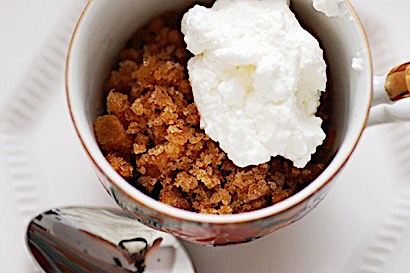
Nicola knew how reasonable Marco was
trying to be. “No, caro,
it's just that spring is a very busy time in
the industry.
It’s when all the shows are, and the
stores start selling their summer lines. There’s
no better time for me to make good money.”
Somehow Nicola knew that her
chef-artist lover was not going to be placated
by her mentioning money, and she was surprised
when all he did was wave his hands in the air
and say, “Okay, Nicolina. But this is very
tough for me.
I know no one in New York, except the
Harrisons and they are not my kind of people. But
I am proud you have this . . . job. So I will
wait another week for you.”
Nicola was not sure what that meant.
“And after that?”
“And after that, we’ll be together. Or
we’re not. My schedule is nothing, but yours
changes every day.”
Nicola thought hard before saying,
“Marco, that sounds like some sort of
ultimatum.”
Marco shook his head, looked into her
eyes and said, “No, no ultimatum. But I love
you and need to be with you. I am homesick, I
do not like what I do, and you are the only
thing I cling to here in New York. It is you
who will determine if I stay or not.”
Nicola thought it best to
accept both the compliment and the opportunity
to make everything up to Marco. “I feel the
same way about you, Marco,” she said. “Not
that I’m going anywhere, but I don’t want to
lose you. You’ll see, I’ll come back from
Milan and everything will fall into place.”
© John Mariani, 2021
In Sub-Freezing Winter Ice Wines
Seem To Be Just The Thing To Enjoy
By John Mariani
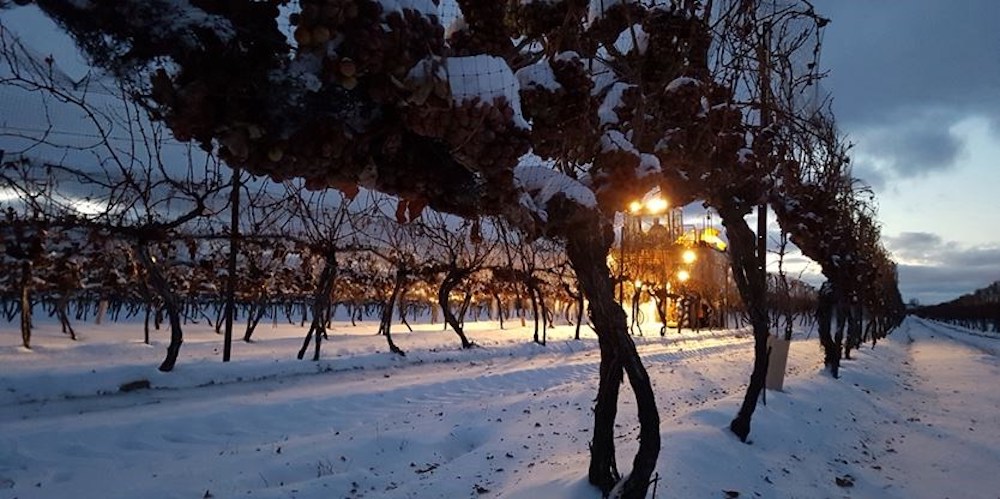
The story goes
that ice wines were discovered by accident
when a German baron left his estate one
summer’s day for one war or another,
neglecting to tell his peasants to pick the
grapes and make wine in the fall. When
he returned he found the peasants—who never
did anything they weren’t told to do—neither
picked the grapes nor made wine, leaving the
fruit on the vine to freeze (below). Quite
literally plucking victory from the vines of
defeat, the baron found that the grapes had
continued to grow ripe with sugar, which was
intensified by the freeze that dehydrated
them, so that when they were pressed, they
gave up very little juice but spectacularly
good, intensely sweet white wine, which in
German is eiswein.
The legend seems too pat, but there’s no
question that a passion for ice wines developed
first in Germany and Austria, where sweet wines
made from late harvested, but never frozen,
grapes have long been an established part of
viniculture.
Wines labeled beerenauslese and trockenbeerenauslese,
however, are usually attacked in the fall by a botrytis
fungus called Edelfäule
(“Noble Rot”), which also concentrates the
sugars, balanced by minerals and acid, just like
Bordeaux’s famous Sauternes and Barsac. Eisweins,
on the other hand, are not
attacked by the Edelfäule,
and they are pressed with ice crystals still
within them. They can be as sweet as botrytis-affected
wines, but they tend to be richer, more like a
liqueur, and are savored as a dessert wine, or
as dessert all on their own.
The picking of the frozen grapes is
carefully monitored, for frozen temperatures
don’t visit German vineyards much before the
third week in November, and to wait for freezing
temperatures—even until February—is risky
business, because the grapes may just wither
away or be eaten by birds (netting is usually
placed over selected vineyards). Even then, the
grapes are carefully plucked from the vine by
hand, discarding the majority that have gone
bad, resulting in a yield that may be only 5 to
10 percent of the entire crop. After pressing,
the wines are aged for a few months, and the
alcohol level stops naturally between 10 and 12
percent. At
that point you can certainly enjoy the freshness
and fruited character of an ice wine, though it
will age and take on more bittersweet,
caramel-like nuances over many years.
 While German and
Austrian eisweins
have long been imported into the U.S., they have
for the most part remained little more than
golden curiosity pieces. Those
who love sweet German wines are more likely to
go for the more complex levels of flavor in an
aged trockenbeerenauslese,
which can be very costly indeed, well in
excess of $100 a bottle. Eisweins
offer a less expensive alternative and a rush of
flavor that is uniquely their own.
While German and
Austrian eisweins
have long been imported into the U.S., they have
for the most part remained little more than
golden curiosity pieces. Those
who love sweet German wines are more likely to
go for the more complex levels of flavor in an
aged trockenbeerenauslese,
which can be very costly indeed, well in
excess of $100 a bottle. Eisweins
offer a less expensive alternative and a rush of
flavor that is uniquely their own.
But North American winemakers are nothing
if not curious, so several—most auspiciously,
Canadians—are now producing some remarkable ice
wines that can compete with the best out of the
Germanic countries. And,
being experimental, they have tried different
grape varieties beyond the usual Riesling used
in Europe.
Most
prominent of these new ice wines are from the
Canadian vintner Inniskillin, with vineyards on
the Niagara Peninsula in Ontario and the
Okanagan Valley in British Columbia—both with
cool climates that can turn to freezing
temperatures conducive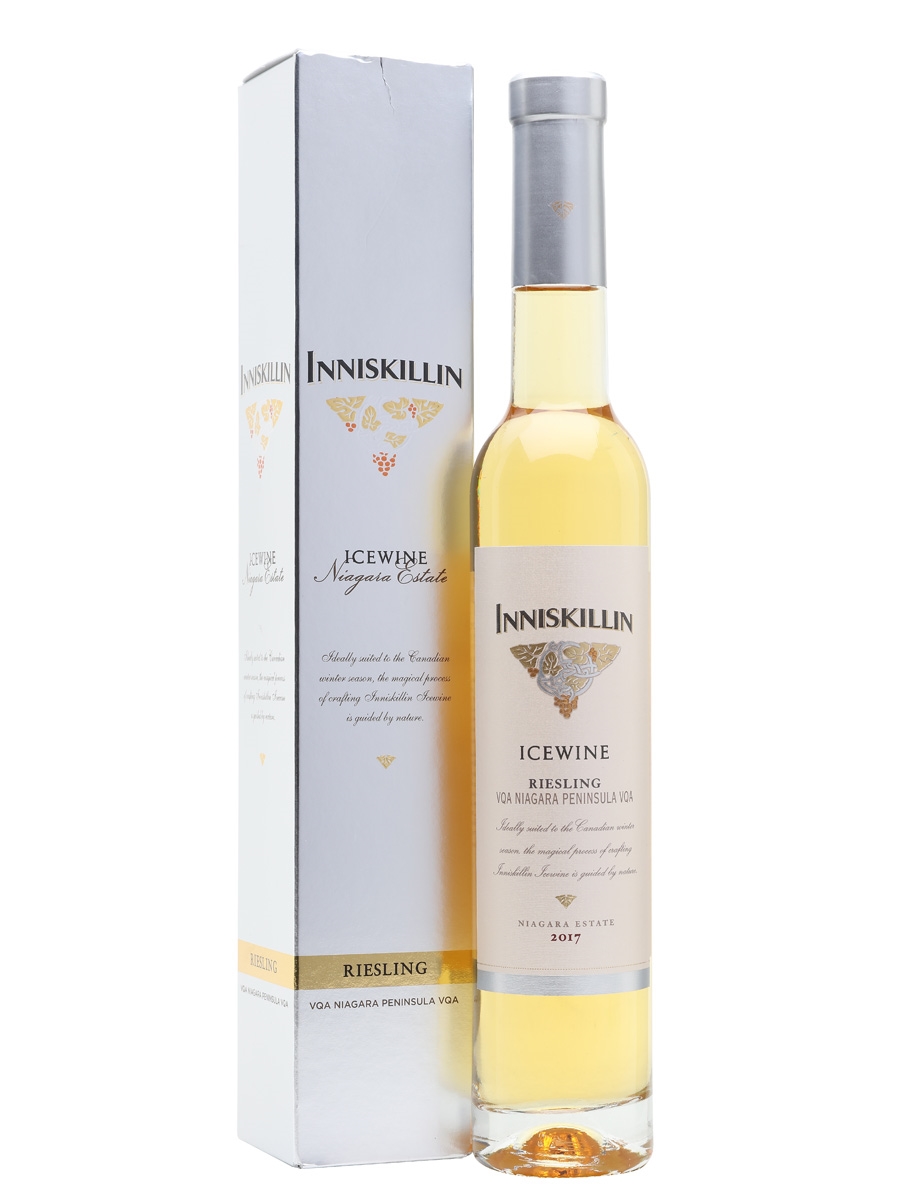 to making ice wines. Indeed,
since Canada is not known for its fine table
wines, the arrival a few years ago of these ice
wines from across the border surprised
connoisseurs, not only for the wines’ brightness
and intensity, but for their varietal
distinctions, since Inniskillin makes ice wines
from Riesling, Vidal, Gewürztraminer, and even
the red grape Carnet Franc, which produces a
lovely rose-colored, spicy, floral ice wine.
They’ve been at it for 35 years.
to making ice wines. Indeed,
since Canada is not known for its fine table
wines, the arrival a few years ago of these ice
wines from across the border surprised
connoisseurs, not only for the wines’ brightness
and intensity, but for their varietal
distinctions, since Inniskillin makes ice wines
from Riesling, Vidal, Gewürztraminer, and even
the red grape Carnet Franc, which produces a
lovely rose-colored, spicy, floral ice wine.
They’ve been at it for 35 years.
Inniskillin
makes a wide variety, including five from the
grape Vidal, even a sparkling version, all in
375 ml bottles. The Vidals are like cotton
candy, with flavors of peach and nectarines. The
winery also makes Rieslings and, surprisingly,
Cabernet Franc.
New York State also produces ice wines of
good caliber, especially in the Finger Lakes
region, as does the state of Washington. Standing
Stone Vidal
from New York’s Lake Seneca is a delight,
with a green-gold color and lovely vanilla
nuances. One the best of the Washington ice
wines is Covey Run 2002 Reserve Riesling, now 18
years old and aging well. One of my favorites
among German entries was a Johannes Selbach
Oster Zelt Himmelweiss Riesling, a very
pretty example of a traditional eiswein
with real breeding. It costs $100 a bottle or
more but comes in 750 ml. And the North American
bottles are a lot more distinctive in design
too.
The true measure of a
contemporary ice wine is not, however, in being an
extreme form of curiously crafted sweet wine; it
is in its being shown to be adaptable to so many
grapes to provide so many tastes and pleasures
to be enjoyed in a few, luscious sips, without
too much alcohol in the bargain. No
longer rarities, ice wines have become gem-like
luxuries.
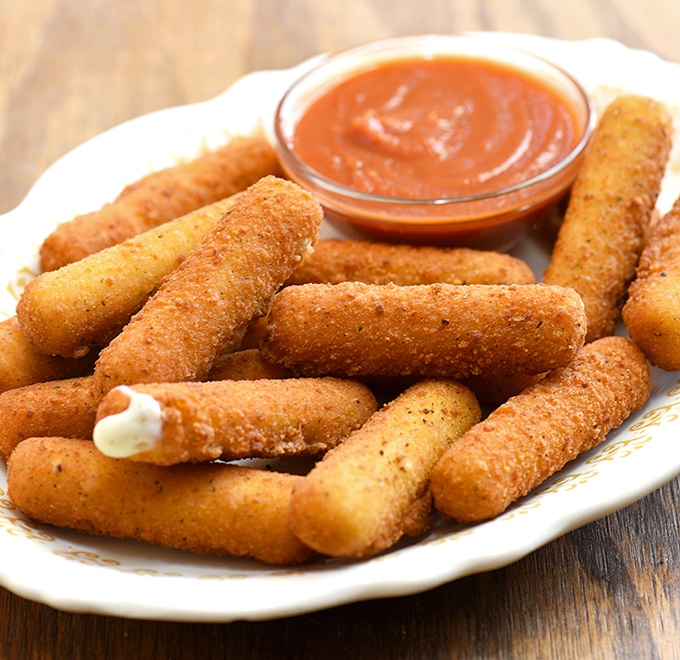
SOMETIMES SHE EVEN EATS THEM!
"For three weeks straight, I dreamed of mozzarella sticks. To be fair, I’ve thought about mozzarella sticks on and off for most of my life, but the intensity of my lust grew as I stayed in my apartment to quarantine for almost a month, unable to go anywhere after a COVID exposure. As soon as I was able to safely go outside again, I knew what I had to do."—Megan Patezhold, "The Impossible Fantasy of the Perfect Mozzarella Stick," New York Magazine (2/2/21)
❖❖❖
Sponsored by

Any of John Mariani's books below may be ordered from amazon.com.
 The Hound in Heaven
(21st Century Lion Books) is a novella, and
for anyone who loves dogs, Christmas, romance,
inspiration, even the supernatural, I hope you'll find
this to be a treasured favorite. The story
concerns how, after a New England teacher, his wife and
their two daughters adopt a stray puppy found in their
barn in northern Maine, their lives seem full of promise.
But when tragedy strikes, their wonderful dog Lazarus and
the spirit of Christmas are the only things that may bring
his master back from the edge of despair.
The Hound in Heaven
(21st Century Lion Books) is a novella, and
for anyone who loves dogs, Christmas, romance,
inspiration, even the supernatural, I hope you'll find
this to be a treasured favorite. The story
concerns how, after a New England teacher, his wife and
their two daughters adopt a stray puppy found in their
barn in northern Maine, their lives seem full of promise.
But when tragedy strikes, their wonderful dog Lazarus and
the spirit of Christmas are the only things that may bring
his master back from the edge of despair. WATCH THE VIDEO!
“What a huge surprise turn this story took! I was completely stunned! I truly enjoyed this book and its message.” – Actress Ali MacGraw
“He had me at Page One. The amount of heart, human insight, soul searching, and deft literary strength that John Mariani pours into this airtight novella is vertigo-inducing. Perhaps ‘wow’ would be the best comment.” – James Dalessandro, author of Bohemian Heart and 1906.
“John Mariani’s Hound in Heaven starts with a well-painted portrayal of an American family, along with the requisite dog. A surprise event flips the action of the novel and captures us for a voyage leading to a hopeful and heart-warming message. A page turning, one sitting read, it’s the perfect antidote for the winter and promotion of holiday celebration.” – Ann Pearlman, author of The Christmas Cookie Club and A Gift for my Sister.
“John Mariani’s concise, achingly beautiful novella pulls a literary rabbit out of a hat – a mash-up of the cosmic and the intimate, the tragic and the heart-warming – a Christmas tale for all ages, and all faiths. Read it to your children, read it to yourself… but read it. Early and often. Highly recommended.” – Jay Bonansinga, New York Times bestselling author of Pinkerton’s War, The Sinking of The Eastland, and The Walking Dead: The Road To Woodbury.
“Amazing things happen when you open your heart to an animal. The Hound in Heaven delivers a powerful story of healing that is forged in the spiritual relationship between a man and his best friend. The book brings a message of hope that can enrich our images of family, love, and loss.” – Dr. Barbara Royal, author of The Royal Treatment.
 |
The Encyclopedia of American Food and Drink by John F. Mariani (Bloomsbury USA, $35) Modesty forbids me to praise my own new book, but let me proudly say that it is an extensive revision of the 4th edition that appeared more than a decade ago, before locavores, molecular cuisine, modernist cuisine, the Food Network and so much more, now included. Word origins have been completely updated, as have per capita consumption and production stats. Most important, for the first time since publication in the 1980s, the book includes more than 100 biographies of Americans who have changed the way we cook, eat and drink -- from Fannie Farmer and Julia Child to Robert Mondavi and Thomas Keller. "This book is amazing! It has entries for everything from `abalone' to `zwieback,' plus more than 500 recipes for classic American dishes and drinks."--Devra First, The Boston Globe. "Much needed in any kitchen library."--Bon Appetit. |
"Eating Italian will never be the same after reading John Mariani's entertaining and savory gastronomical history of the cuisine of Italy and how it won over appetites worldwide. . . . This book is such a tasteful narrative that it will literally make you hungry for Italian food and arouse your appetite for gastronomical history."--Don Oldenburg, USA Today. "Italian
restaurants--some good, some glitzy--far
outnumber their French rivals. Many of
these establishments are zestfully described
in How Italian Food Conquered the World, an
entertaining and fact-filled chronicle by
food-and-wine correspondent John F.
Mariani."--Aram Bakshian Jr., Wall Street
Journal.
"Equal parts
history, sociology, gastronomy, and just
plain fun, How Italian Food Conquered the
World tells the captivating and delicious
story of the (let's face it) everybody's
favorite cuisine with clarity, verve and
more than one surprise."--Colman Andrews,
editorial director of The Daily
Meal.com. "A fantastic and fascinating
read, covering everything from the influence
of Venice's spice trade to the impact of
Italian immigrants in America and the
evolution of alta cucina. This book will
serve as a terrific resource to anyone
interested in the real story of Italian
food."--Mary Ann Esposito, host of PBS-TV's
Ciao
Italia. "John Mariani has written the
definitive history of how Italians won their
way into our hearts, minds, and
stomachs. It's a story of pleasure over
pomp and taste over technique."--Danny Meyer,
owner of NYC restaurants Union Square
Cafe, The Modern, and Maialino.
|
 |
 |
 |
 |
 |
 |
 |
 |
 Everett Potter's Travel Report:
Everett Potter's Travel Report: 
 Eating Las Vegas
JOHN CURTAS has been covering the Las Vegas
food and restaurant scene since 1995. He is
the co-author of EATING LAS VEGAS – The 50
Essential Restaurants (as well as
the author of the Eating Las Vegas web site: www.eatinglasvegas.
He can also be seen every Friday morning as
the “resident foodie” for Wake Up With the
Wagners on KSNV TV (NBC) Channel 3 in
Las Vegas.
Eating Las Vegas
JOHN CURTAS has been covering the Las Vegas
food and restaurant scene since 1995. He is
the co-author of EATING LAS VEGAS – The 50
Essential Restaurants (as well as
the author of the Eating Las Vegas web site: www.eatinglasvegas.
He can also be seen every Friday morning as
the “resident foodie” for Wake Up With the
Wagners on KSNV TV (NBC) Channel 3 in
Las Vegas.
MARIANI'S VIRTUAL GOURMET
NEWSLETTER is published weekly. Publisher: John Mariani. Editor: Walter Bagley. Contributing Writers: Christopher Mariani,
Robert Mariani, Misha Mariani, John A. Curtas, Gerry Dawes, Geoff Kalish,
and Brian Freedman. Contributing
Photographer: Galina Dargery. Technical
Advisor: Gerry
McLoughlin.
If you wish to subscribe to this
newsletter, please click here: http://www.johnmariani.com/subscribe/index.html
© copyright John Mariani 2021
